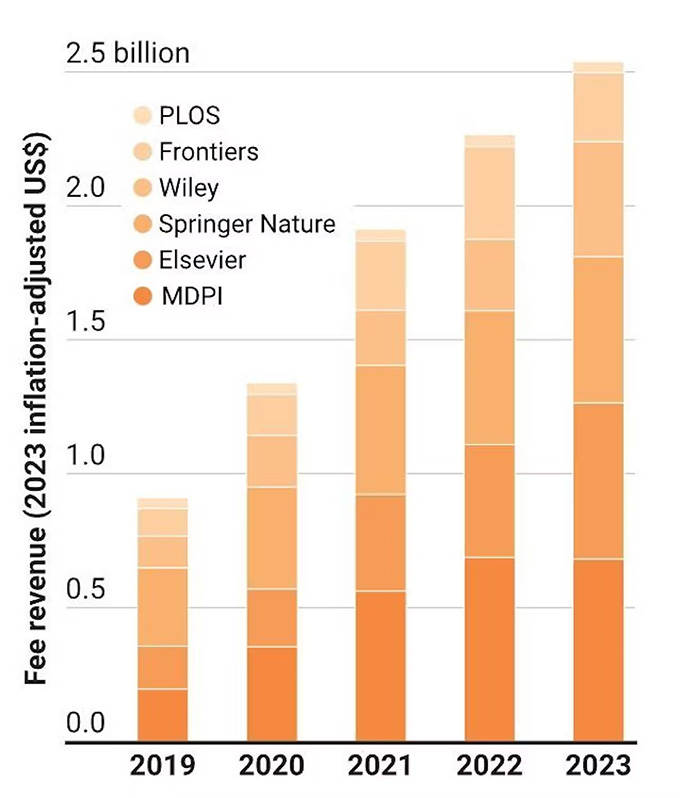
For scientists, accessing what others publish is essential for research progress. Similarly, publishing our research results in high-impact scientific journals is a priority in our careers, especially in the early stages of our professional development .
Publishing in these journals contributes to increasing our academic prestige, based on the visibility and impact of our publications. But, above all, it is the only way to ensure that the results of our research reach society and translate into improved global well-being.
However, the publishing system is experiencing a fundamental crisis from which we have no way out. It represents huge profits for publishing houses and advantages for the wealthiest research centers, which publish more and dominate academic output. The side effect: a major research project by a scientist without resources ends up in the filing cabinet.
The trap
For years, accessing scientific studies meant paying expensive subscriptions to specialized journals. But then a seemingly brilliant idea emerged: open access to publications. With this, major scientific publishers promised that anyone could read scientific studies without financial barriers. But this promise comes with a hidden problem we’re still struggling to overcome: publishing in open access isn’t free and, in many cases, has become a highly profitable business for a few publishers.
A recent study, Article Processing Fees , estimates that between 2019 and 2023, nearly €9 billion in publication fees were paid to just six major publishers: Elsevier APC, Frontiers, MDPI, PLOS, Springer Nature, and Wiley.
These fees, which can reach up to 10,000 euros per article, are not paid by readers, but by the researchers themselves or their institutions, which have invested a large amount of resources in carrying out the work .
This model, far from democratizing science, is draining funding from universities and research centers, widening inequalities, and primarily benefiting large publishing houses.
Who pays the bill for free science?
Most scientific research is funded with public funds. However, authors who want to publish in open access must pay high fees to publishers.
Paradoxically, these articles are reviewed by other researchers free of charge, in a system based on academic collaboration. Thus, large publishing houses have found a way to obtain enormous profits with minimal costs.
According to the aforementioned study , spending on so-called article processing charges (APCs) nearly tripled in five years, rising from around €900 million in 2019 to more than €2.5 billion in 2023. Elsevier, Springer Nature, and Wiley lead this market, with combined revenues of more than €1.8 billion in APCs in 2023.
The pressure on scientists
This growth is largely due to pressure on researchers to publish more .
In the academic world, promotion and funding depend on the number of articles published and the number of times they are cited. In the short term, major contributions can go unnoticed for years or decades, or simply if the author (and their research group) is not among the leading figures in a given field, they will not be cited. Publishers have taken advantage of this need to increase their rates and diversify their sources of income.

Estimated global article processing fees paid to six open access publishers between 2019 and 2023. Figure from Haustein et al. 2024. Arxiv , CC BY
The double business of publishing houses
Science editor Jeffrey Brainard’s article outlines different strategies for maximizing your profits :
- Hybrid journals : These are traditional subscription journals, but they allow you to pay an APC to make a specific article open access. The publisher charges twice: the authors and the libraries.
- Purely open access journals : They only publish articles with APCs, eliminating subscriptions but maintaining high costs for researchers. The result is that open access has not reduced the concentration of the publishing market. The same companies that dominated the subscription system continue to control scientific publishing in the open access era.
Who can afford to publish in open access?
In theory, open access allows anyone to read research without paying. But who can publish under this system?
Fees can range from €2,000 to €10,000 per article, and to be competitive, a researcher needs to publish several studies per year. This means:
- The richest research centers publish more and dominate academic output.
- Researchers with fewer resources are excluded because they cannot afford the fees.
- Countries with less scientific funding have less visibility in the academic community.
It’s a system in which the best-funded publish and everyone else can read for free. The model perpetuates a gap between those who generate knowledge and those who can access it.
Worrying effects of this system
This publication model has consequences that affect the entire scientific community :
- Less money for research : Universities and funding agencies spend huge sums on APCs instead of investing in research or infrastructure.
- Quality concerns : Some publishers have been criticized for accepting articles without sufficient peer review in order to increase their revenue. This is especially serious in high-volume journals, which are under intense scrutiny.
- Exclusion of researchers with fewer resources : a system is imposed in which only those who can pay are able to publish, excluding scientists from countries with less funding.
This growth is unsustainable, and more equitable alternatives are needed to ensure that open access benefits the entire scientific community, not just publishers.
Are there solutions?
Faced with this problem, alternatives have emerged, such as the diamond model , where neither authors nor readers pay, and journals are funded by academic institutions or consortia. However, its viability remains a challenge: establishing new journals with sufficient prestige to compete with large publishers can take years.
Another strategy has been read-and-publish agreements , where universities and funding agencies negotiate with publishers to make their researchers’ articles open access without the authors having to pay individually. However, these agreements continue to favor large publishers and perpetuate their market control.
Furthermore, scientific evaluation continues to be based on journal prestige and citation counts. This means that researchers must publish in high-impact journals, which tend to be the most expensive.
As long as the evaluation model doesn’t change, it will be difficult to break the dominance of large publishers.
The future of scientific publishing
To make science truly accessible, we must demand cost transparency and seek more sustainable models. Universities, governments, and researchers must work together to ensure that open access does not reproduce the same inequalities as the traditional subscription system .
The open access crisis isn’t a long-term problem: it’s a reality that’s already affecting the production and dissemination of knowledge worldwide. The big question is: who will be able to continue publishing in the future, and at what price?
Author Bio: José Ygnacio Pastor Caño is Professor of Materials Science and Engineering at the Polytechnic University of Madrid (UPM)
